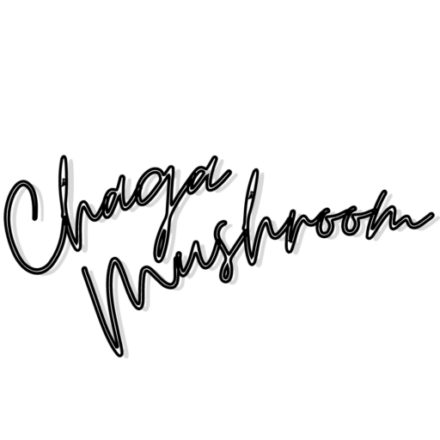The Latin name for the Chaga mushroom is Inonotus obliquus. Unlike many other fungi, it starts growing from the inside of a tree instead of developing on the surface, and as it matures, it protrudes from the tree. Not only is it unique in nature and looks, but the fungus also bears outstanding medicinal value.
Chaga can balance and restore your entire system with incredible immunomodulating powers. Chaga’s beta-glucans can increase the production of lymphocytes (a type of white blood cell that regulate the immune response to infectious microorganisms and other foreign substances). Chaga is outstanding in its power to keep you looking young and healthy. As the richest natural antioxidant source, the fungus will protect your body from cell degeneration. An abundance of betulin also gives antitumor and anticancer properties to work with.
People in Eastern and Northern Europe have been drinking Chaga tea for its many health benefits for centuries. So let’s discover more of what Chaga does for you.
What is Chaga, and where can you find it?
This polypore fungus doesn’t look like a mushroom, as most people think of mushrooms. It’s not a mushroom. The growth coming out of the tree is a fungal mycelium, the vegetative part of the fungus. It comprises thousands of branching hyphae, which network with the birch tree, transferring nutrients and communicating with its host.
Due to its co-dependent relationship with birch, the fungus grows in colder climates with abundant birch trees. You’ll be able to find and harvest the fungus in Siberia, Russia, Northern Asia, Canada, Northern United States (including Alaska), and Northern and Central Europe.
As mentioned, it’s a unique fungus that starts growing from inside the tree instead of developing on the surface of the tree. As it matures, it protrudes from the host tree. The appearance is much like that of a burl, and there is often quite a lot of confusion among new foragers mistaking burls for Chaga. You’ll be able to distinguish it by a dark, almost black exterior. Looking like something has burnt on the tree. Inside, it’s a rich orange-brown color with a corky texture.
How is Chaga consumed?
Chaga cannot be eaten raw or cooked like other types of mushrooms, for example, button mushrooms or shiitake. It is a hard, dense polypore mass. This functional fungus is not edible in the standard method, but instead, the properties need to be extracted. The extraction process requires prolonged simmering or soaking of the fungus’s chunks or powder. Heat exposure makes the beneficial components bioavailable to the human body, meaning the body can absorb the nutrients.
Traditionally, the polypore is broken into small pieces, then simmered to make tea. The fungus is removed from the mixture before drinking the tea. It is also common to find powdered raw Chaga that can be added to different recipes. Chaga is also famous in skincare, and it’s easy to use binders and make a salve or medicinal application out of it.
Related: DIY Chaga cream
Regarding products available in retail, tea is prevalent, as are Chaga tinctures. However, it’s important to note that making the tea or tincture is relatively easy as long as you have the raw fungus available.
Related: Chaga tincture recipes
The taste of Chaga is earthy and a little sweet. The sweetness comes from the host birch tree – birch sap is sweet. Usually, though, it is mixed with other liquids, sweeteners, or flavoring to make it more enjoyable. The flavor isn’t sour on its own, but most people prefer to add it to something.
How does Chaga benefit your health?
The fungus contains many polysaccharides in the form of beta-glucans, which have a strong antioxidant activity inside your body. These compounds help fight off free radicals and maintain a normal cell cycle. Also, they act as prebiotics to stimulate the growth of healthy gut microbiota. On the Oxygen Radical Absorbance Capacity (ORAC) scale, it’s an ultra-potent source of antioxidants. Therefore it won’t come as a surprise to learn that Chaga truly is one of the world’s richest natural sources of antioxidants.
Related: 5 Benefits of Chaga for skin health
Antioxidants protect your body from free radicals, which otherwise would lead to cell degeneration (chronic fatigue, chronic pain, chronic illness, and cancer). The abundance of betulin gives this fungus antitumor and anticancer properties. Betulin produces a derivative called betulinic acid, which is antibacterial, antiviral, anti-inflammatory, and antioxidant, with adaptogenic properties.
Here is a list of things Chaga does for you:
- boosts the immune system
- treats cancer by fighting off cancer cells
- aims digestion
- alleviate pain from toothaches
- improves lung health
- detoxifies the body
- treats joint inflammation, particularly rheumatism and arthritis
- cures tumors
- treats viral infections
- manages cholesterol
- regulates blood sugar
- lowers blood pressure
- alkalines your body by fighting inflammation
- prevents drug/alcohol side effects
- improves overall health and well-being
- improves skin health
- promotes healthy-looking hair
Recent scientific studies demonstrate the fungus’s effectiveness in treating many diseases and afflictions. The Memorial Sloan Kettering Cancer Center lists the purported uses of Chaga as treating and preventing cancer, stimulating the immune system, reducing inflammation, and protecting the liver. Most research has been performed in lab studies or with mice or rats. Few studies involve human subjects. Russia, Japan, and Scandinavia are leading the way in researching and determining Chaga’s exact health benefits.
Rrecent studies on Chaga health benefits:
- A hot water extract of Chaga inhibited the growth of colon cancer cells.
- Chaga demonstrated anti-inflammatory and pain-reducing properties in rats with acute edema (swelling).
- Chaga broth administered to diabetic mice exhibited abilities to lower blood glucose levels and improve antioxidant activities.
- An extract of Chaga reduced inflammation in mice with colitis (swelling of the colon).
- Chaga administered to mice showed enhanced cognitive ability, better memory skills, and increased learning ability.
- Anti-viral properties of Chaga were demonstrated in fighting herpes infections.
- A Chaga extract showed promise in treating several cancers, including cervical and colon cancer, leukemia, and liver tumors.
- Polysaccharides in Chaga exhibit immunomodulating properties. Immunomodulation is the ability of the immune system to self-regulate. Some conditions, like irritable bowel syndrome, psoriasis, rheumatoid arthritis, lupus, and multiple sclerosis, are caused by overactive immune systems. Other diseases, like bronchitis, pneumonia, skin infections, anemia, and meningitis, are caused by weak immune systems. A robust self-regulating immune system is essential to human health.
- The immunomodulating properties of Chaga demonstrated the potential to combat HIV. It has been published that Chaga compounds have an antiviral effect against Hepatitis-C (HCV) and HIV.










